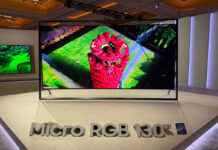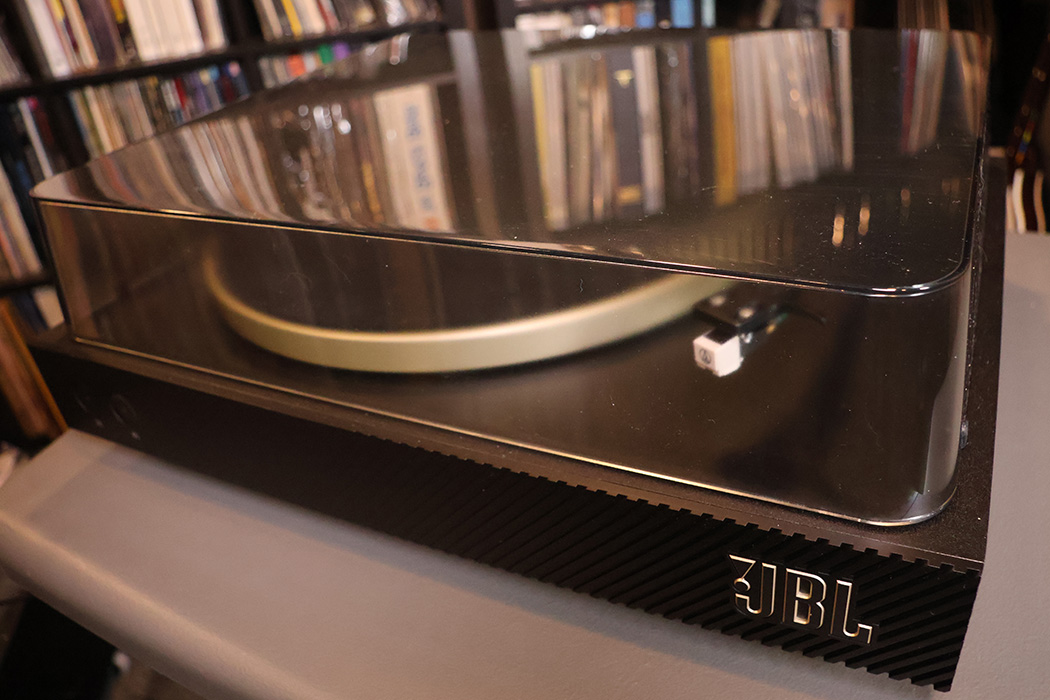
As more and more people discover, or perhaps rediscover their love of vinyl record playback, it’s a perfect time to consider a turntable that provides superior playback at a competitive price. For decades, JBL has been at the forefront of audio, with their standalone, powered, and Bluetooth speakers leaders in the industry. As part of their effort to reincorporate the styling of their celebrated vintage equipment from the 1970s, their latest turntable perfectly blends nostalgia with modern performance expectations. How does the Bluetooth enabled JBL Spinner belt drive turntable stand up to scrutiny? Tune in to find out!
Specifications
- Dimensions: 155mm x 435mm x 368mm
- Weight: 5.3kg
- Plinth: Black MDF
- Platter: Die-cast aluminium
- Cartridge: Audio Technica AT3600L (replaceable)
- Bluetooth: Version 5.2, aptX HD Audio
- Analogue output: RCA
- Built-in moving magnet photo stage (defeatable)
Setting up the JBL Spinner BT
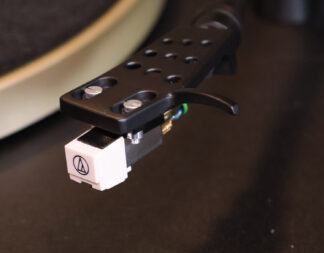
Setting up a turntable can often be quite a chore, but thanks to its robust construction, easy to follow instructions, and pre-mounted cartridge, it’s as painless as it can be while still providing the flexibility of future upgrade. After unboxing, you mount the platter, attach the belt to the motor (made easy by a welcome piece of adhesive tape holding it in place!), add the cloth platter cover, attach the cartridge to the arm, and the headshell to the base. Then, you’re pretty much ready to go for dialing in the counterweight.
As per usual, following the instructions will get things operating pretty well, but I highly recommend investing in a small digital scale to properly dial in the track force (i.e., how heavily the cartridge lays on your records). I managed to dial into 3.0g—the recommendation range for the AT3600L is a relatively heavy 2.5-3.5g—but that’s par for the course when it comes to conical/spherical style such as this one. While it comes premounted on the headshell, it’s a relatively trivial thing to upgrade to superior cartridges in the future, but out of the box you’re going to get something that’s already above average for most listeners. As recommended in the manual, anti-skate was set to the same 3g, and I found the tracking was more than satisfactory.
The suspension feet on the bottom of the beefy MDF plinth are slightly adjustable, making it much easier to set up the turntable perfectly horizontally. When grabbing that digital scale, it might also make sense to invest in a bullet-style circular level, as the bane of just about any vinyl playback is an off-kilter platter.
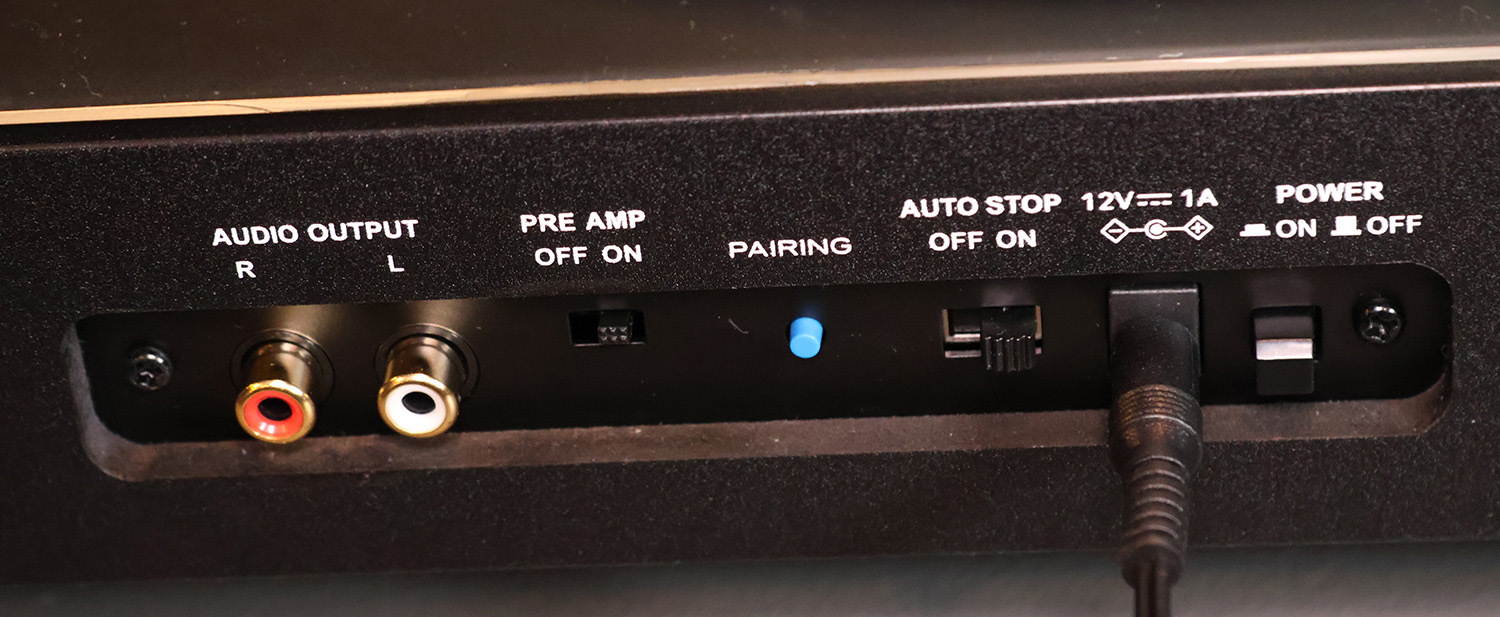
Using the JBL Spinner BT
There are three major ways of outputting the signal from the turntable. The most obvious is using the RCA outputs into a line-level input, either a powered speaker or a conventional sound system. The built-in moving magnet amplifier does a decent job without any egregious audio artifacts present. To its great benefit, you can bypass the internal amplification and send out the bare signal from the cartridge, meaning you can employ potentially superior amplification outboard, or even mount a moving coil cartridge in the future (though, I admit, that would be a bit overkill on this model of turntable).
The third mode broadcasts a Bluetooth signal to headphones, powered speakers or compatible receivers, cutting at least one cord from the equation. The transmission codec supports aptX, so you’re getting superior Bluetooth performance, even if not quite as robust as the raw signal from the back of the unit. Given the fact that you’re listening to analogue, which is then broadcasted in digital, your results may vary. However, it’s definitely a nice feature to have when, say, you wish to use headphones instead of your regular setup. If your speakers/setup allows a wired connection, I highly recommend going that route. But again, it’s really nice to have this kind of flexibility built-in.
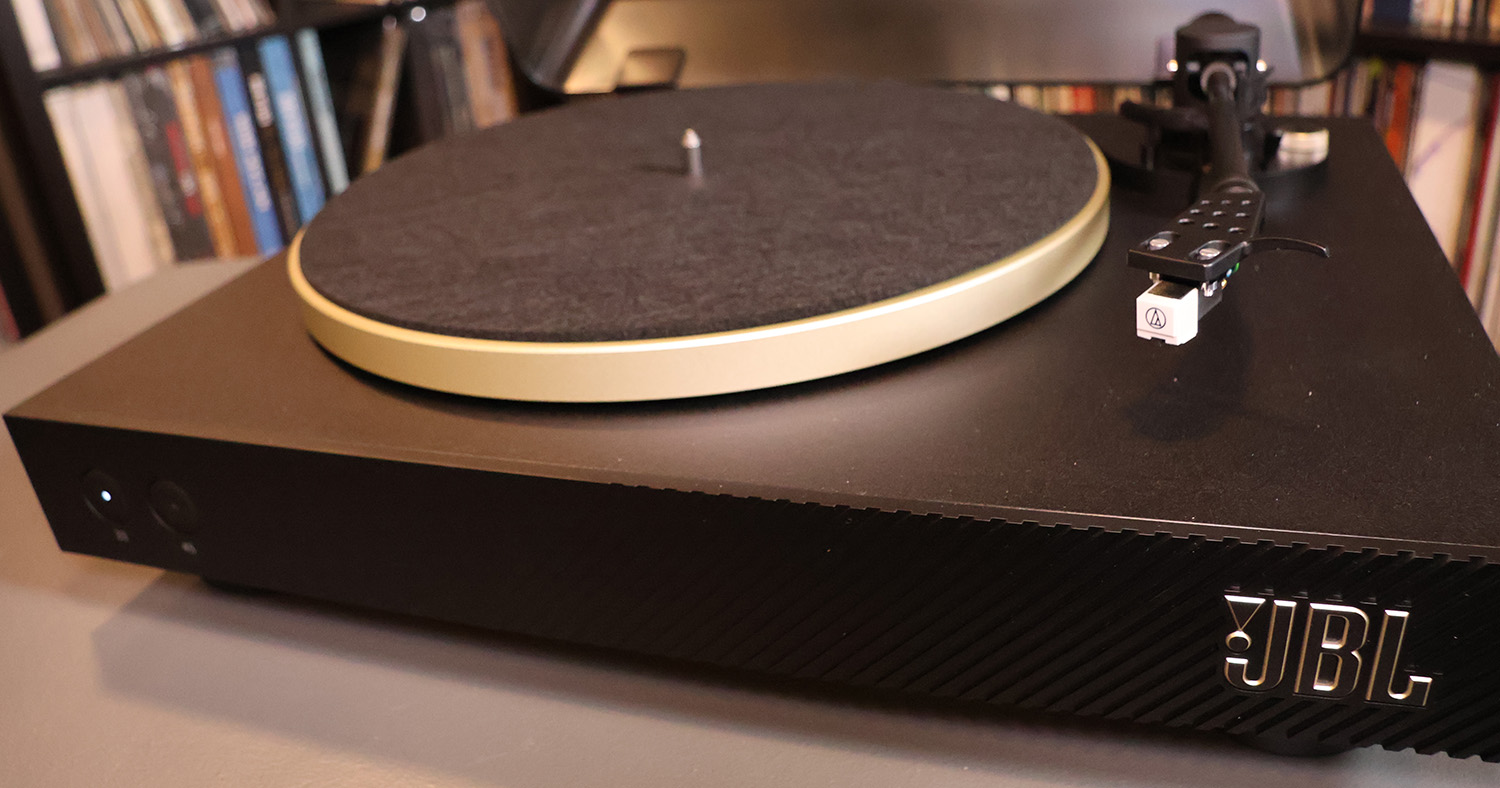
Listening to the JBL Spinner belt drive turntable
While obviously not the central motivation for most turntables, I’m extremely pleased with the JBL Spinner’s mix of form and function. The solid MDF plinth, easy-to-navigate front buttons for changing speed between 33 and 45rpm, the solidly built dust cover, and the conveniently accessible rear buttons for power and Bluetooth synchronization are all smartly laid out. A few LEDs indicate things like power and wireless connection status, but other than that, it’s an appropriately stylish, minimalist look that follows the design aesthetic of most vintage turntables.
The flexibility of connectivity means that there are different ways of getting the most out of the turntable’s fundamental components (platter, bearing, arm, etc.) and customizable elements (cartridge type, audio mode, etc.). Testing first with Bluetooth the table quickly connected to the JBL Authentics 500 wirelessly without any drama. While transmitting via Bluetooth is convenient, the Authentics 500 doesn’t support aptX (only SBC), and I found the sound to be somewhat strangled compared to what I was expecting. Adding an RCA to 3.5mm cable for a wired connection, the sound immediately opened up, and I was able to enjoy vinyl playback in a much more satisfying manner.
Connecting to my reference system illustrated that the JBL Spinner is quite competent, with the built-in amplifier doing a decent job in digging out the most from the tiny signal picked up by the stylus that must be magnified many times in order to achieve line level voltage. Unsurprisingly, when bypassing the internal amp and hooking into a phono preamp costing many times the table itself resulted in even more musical results from the AT3600L, showing why it’s the go-to cartridge for many looking for the best pound-for-pound performance at this price range.
I played a mix of records from challenging 12” singles full of bass from the likes of Michael Jackson, through to Harry Belafonte’s exquisite Carnegie Hall concerts, Erykah Badu’s Mama’s Gun, and the recent soundtrack to the Oscar-winning film The Holdovers that had a mix of orchestral pieces and terrific vintage deep cuts. All played without issue, presenting a sound signature far different than that of the same selections found on streaming.
I enjoyed being able to switch back and forth between listening via my headphones and through my main speaker system, and found that in that case anything lost in the digitization was more than made up for in convenience.
Final thoughts
The vinyl craze seems to be here to stay, and if you’re looking for a good, solid turntable that’s ideal for both beginner and long-term collector alike, the JBL Spinner BT belt drive turntable should be on your list to consider. Its wireless connectivity adds another layer of convenience, but it’s the robust construction, upgradability, ease of operation, and sleek styling that really won me over. I love that it’s a player that you can use right out of the box, but as you collect records and you wish to expand, the table will be able to grow with you, accommodating superior cartridges and outboard amplification if and when you choose to take that route. A terrific turntable, the JBL Spinner belt drive turntable should definitely be something you take for a spin.




